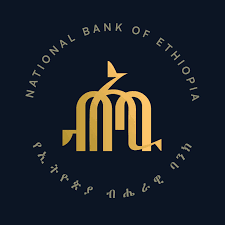Summery
Founded: 1905
Type: Central Bank Of Ethiopia
Category: Bank
Sector: Governmental Bank
Headquarters: Addis Ababa, Ethiopia
Employees: 200-500+
Customer Support: 6230
Short Term: NBE
Amharic: የኢትዮጵያ ብሔራዊ ባንክ
History
1906: Establishment of the Bank of Abyssinia, marking the introduction of modern banking in Ethiopia. Inaugurated by Emperor Menelik II.
1931: Changes in the banking system initiated by Emperor Haile Selassie, leading to the purchase and renaming of the Abyssinian Bank to the Bank of Ethiopia, the first nationally owned bank in Africa.
1936-1941: Expansion of banking activity during the Italian invasion, with Italian banks becoming particularly active.
1943: On April 15, the State Bank of Ethiopia was established as the Central Bank, combining central and commercial banking operations.
1963: The State Bank was split into the National Bank of Ethiopia and the Commercial Bank of Ethiopia, clearly defining their separate roles.
1976: Implementation of Monetary and Banking Proclamation No. 99, aligning the Bank’s functions with socialist economic principles and expanding its regulatory role.
1994: Following regime change and liberalization policies, the NBE was established as a judicial entity independent from the government, with defined roles and functions.
2008: Major restructuring of the NBE under Proclamation No. 591, enhancing its regulatory role and introducing modern financial products, including mobile and internet banking.
Vision, Mission & Role Of National Bank Of Ethiopia
Vision
To be a trusted guardian of Ethiopia’s monetary and financial systems.
MISSION
To maintain price and external stability while ensuring a safe, modern, and inclusive financial system.
Roles
-Administering Monetary Policy: Formulating and implementing the country's monetary policy to ensure economic stability.
-Issuing Currency: Providing bank notes and coins to facilitate transactions within the economy.
-Government Banking: Acting as a banker for the government, managing its accounts and financial operations.
-Supervising the Banking Sector: Overseeing and regulating the banking sector to ensure compliance and stability.
-Managing Exchange Rates: Controlling the exchange rate and managing foreign exchange reserves to support economic stability.
-Conducting Economic Research: Undertaking research to inform policy decisions and enhance economic understanding.
Key Function Of National Bank Of Ethiopia
The National Bank of Ethiopia plays a vital role in shaping the country's economic landscape through several key functions:
- Regulating Money Supply: It manages the circulation, availability, and cost of money and credit to maintain economic stability.
- Overseeing Foreign Exchange: The bank controls the exchange rate and manages foreign currency reserves to protect the nation's financial interests.
- Supervising Financial Institutions: It licenses, monitors, and regulates banks, insurance companies, and other financial organizations to ensure their proper functioning.
- Issuing Currency: The bank is responsible for printing and distributing banknotes and coins, ensuring the smooth operation of the monetary system.
- Serving as the Government’s Banker: It acts as the central bank for the government, managing its finances and facilitating various transactions.
- Conducting Economic Research: The National Bank conducts research to provide critical data and insights that support effective policymaking.
- Encouraging Banking and Insurance Growth: It promotes the expansion of banking and insurance services across the nation, helping to increase financial inclusion.
- Setting Financial Boundaries: The bank sets limits on foreign exchange holdings, gold assets, and external debt to maintain economic health.
- Offering Refinancing Options: It provides refinancing facilities to banks and financial institutions to support both short-term and long-term financing needs.
NBE also sets
Market/Rates
-Daily Indicative Exchange Rates
-Gold Purchasing Rate
-Price of Commodities
-Treasury Bill Auction Results
Laws
-Proclamation
-Regulations
-Directive
-Guidance
Control Financial Institutions
Financial institutions controlled by the National Bank of Ethiopia (NBE):
Banks: 32
Insurers: 18
Microfinance Institutes: 53
Capital Goods Finance/Lease Companies: 6
Payment Instrument Issuers/System Operators: 10
Re-insurance Company: 1



 Previous: ZamZam Bank
Previous: ZamZam Bank